strategy
military
Introduction
 in warfare, the science or art of employing all the military, economic, political, and other resources of a country to achieve the objects of war.
in warfare, the science or art of employing all the military, economic, political, and other resources of a country to achieve the objects of war.Fundamentals
 The term strategy derives from the Greek strategos, an elected general in ancient Athens. The strategoi were mainly military leaders with combined political and military authority, which is the essence of strategy. Because strategy is about the relationship between means and ends, the term has applications well beyond war: it has been used with reference to business, the theory of games, and political campaigning, among other activities. It remains rooted, however, in war, and it is in the field of armed conflict that strategy assumes its most complex forms.
The term strategy derives from the Greek strategos, an elected general in ancient Athens. The strategoi were mainly military leaders with combined political and military authority, which is the essence of strategy. Because strategy is about the relationship between means and ends, the term has applications well beyond war: it has been used with reference to business, the theory of games, and political campaigning, among other activities. It remains rooted, however, in war, and it is in the field of armed conflict that strategy assumes its most complex forms.Theoreticians distinguish three types of military activity: (1) tactics, or techniques for employing forces in an engagement (e.g., seizing a hill, sinking a ship, or attacking a target from the air), (2) operations, or the use of engagements in parallel or in sequence for larger purposes, which is sometimes called campaign planning, and (3) strategy, or the broad comprehensive harmonizing of operations with political purposes. Sometimes a fourth type is cited, known as grand strategy, which encompasses the coordination of all state policy, including economic and diplomatic tools of statecraft, to pursue some national or coalitional ends.
Strategic planning is rarely confined to a single strategist. In modern times, planning reflects the contributions of committees and working groups, and even in ancient times the war council was a perennial resort of anxious commanders. For example, Thucydides' History of the Peloponnesian War (c. 404 BC) contains marvelous renditions of speeches in which the leaders of different states attempt to persuade their listeners to follow a given course of action. Furthermore, strategy invariably rests on assumptions of many kinds—about what is lawful or moral, about what technology can achieve, about conditions of weather and geography—that are unstated or even subconscious. For these reasons, strategy in war differs greatly from strategy in a game such as chess. War is collective; strategy rarely emerges from a single conscious decision as opposed to many smaller decisions; and war is, above all, a deeply uncertain endeavour dominated by unanticipated events and by assumptions that all too frequently prove false.
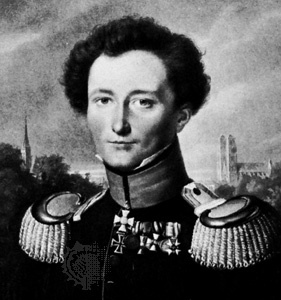 Such, at least, has been primarily the view articulated by the greatest of all Western military theoreticians, the Prussian general Carl von Clausewitz (Clausewitz, Carl von). In his classic strategic treatise, On War (1832), Clausewitz emphasizes the uncertainty under which all generals and statesmen labour (known as the “fog of war”) and the tendency for any plan, no matter how simple, to go awry (known as “friction”). Periodically, to be sure, there have been geniuses who could steer a war from beginning to end, but in most cases wars have been shaped by committees. And, as Clausewitz says in an introductory note to On War, “When it is not a question of acting oneself but of persuading others in discussion, the need is for clear ideas and the ability to show their connection with each other”—hence the discipline of strategic thought.
Such, at least, has been primarily the view articulated by the greatest of all Western military theoreticians, the Prussian general Carl von Clausewitz (Clausewitz, Carl von). In his classic strategic treatise, On War (1832), Clausewitz emphasizes the uncertainty under which all generals and statesmen labour (known as the “fog of war”) and the tendency for any plan, no matter how simple, to go awry (known as “friction”). Periodically, to be sure, there have been geniuses who could steer a war from beginning to end, but in most cases wars have been shaped by committees. And, as Clausewitz says in an introductory note to On War, “When it is not a question of acting oneself but of persuading others in discussion, the need is for clear ideas and the ability to show their connection with each other”—hence the discipline of strategic thought.Clausewitz's central and most famous observation is that “war is a continuation of politics by other means.” Of course war is produced by politics, though in common parlance war is typically ascribed to mindless evil, the wrath of God, or mere accident, rather than being a continuation of rational diplomacy. Moreover, Clausewitz's view of war is far more radical than a superficial reading of his dictum might suggest. If war is not a “mere act of policy” but “a true political instrument,” political considerations may pervade all of war. If this is the case, then strategy, understood as the use of military means for political ends, expands to cover many fields. A seeming cliché is in fact a radical statement.
There have been other views, of course. In The Art of War, often attributed to Sunzi (5th century BC) but most likely composed early in China's Warring States period (475–221 BC), war is treated as a serious means to serious ends, in which it is understood that shrewd strategists might target not an enemy's forces but intangible objects—the foremost of these being the opponent's strategy. Though this agrees with Clausewitz's ideas, The Art of War takes a very different line of argument in other respects. Having much greater confidence in the ability of a wise general to know himself and his enemy, The Art of War relies more heavily on the virtuosity of an adroit commander in the field, who may, and indeed should, disregard a ruler's commands in order to achieve war's object. Where On War asserts that talent for high command differs fundamentally from military leadership at lower levels, The Art of War does not seem to distinguish between operational and tactical ability; where On War accepts battle as the chief means of war and extensive loss of human life as its inevitable price, The Art of War considers the former largely avoidable (“the expert in using the military subdues the enemy's forces without going to battle”) and the latter proof of poor generalship; where On War doubts that political and military leaders will ever have enough information upon which to base sound decisions, The Art of War begins and concludes with a study of intelligence collection and assessment.
To some extent, these approaches to strategy reflect cultural differences. Clausewitz is a product of a combination of the Enlightenment and early Romanticism; The Art of War's roots in Daoism are no less deep. Historical circumstances explain some of the differences as well. Clausewitz laboured under the impact of 20 years of war that followed the French Revolution and the extraordinary personality of Napoleon (Napoleon I); The Art of War was written during the turmoil of the Warring States period. There also are deeper differences in thinking about strategy that transcend time and place. In particular, differences in contemporary discussions of strategy persist between optimists, who think that the wisely instructed strategist has a better than even chance (other things being equal) to control his fate, and pessimists (such as Clausewitz), who believe that error, muddle, and uncertainty are the norm in war and therefore that chance plays a more substantial role. In addition, social scientists, exploring such topics as inadvertent war or escalation, have been driven by the hope of making strategy a rational and predictable endeavour. Historians, by and large, side with the pessimists: in the words of British historian Michael Howard, one of the best military historians of the 20th century, most armies get it wrong at the beginning of a war.
Strategy in antiquity
The ancient world offers the student of strategy a rich field for inquiry. Indeed, the budding strategist is probably best advised to begin with Thucydides' History of the Peloponnesian War (c. 404 BC), which describes the contest between two coalitions of Greek city-states between 431 and 404 BC. Athens, a predominantly maritime power, led the former members of the Delian League (now incorporated in the Athenian empire) against the Peloponnesian League, which was led by Sparta, a cautious land power. In the opening speeches rendered by Thucydides, the two leaders, Pericles of Athens and Archidamus II of Sparta, wrestle with strategic issues of transcendent interest: How shall they bring their strengths to bear on their enemy's weakness, particularly given the different forms of power in which the two coalitions excel? How will the nature of the two regimes—the volatility and enterprising spirit of democratic Athens, the conservatism and caution of slaveholding Sparta—shape the contest?
From his study of the Peloponnesian War, the 19th-century German military historian Hans Delbrück drew a fundamental distinction between strategies based on overthrow of the opponent and those aimed at his exhaustion. Both Sparta and Athens pursued the latter; the former was simply unavailable, given their fundamental differences as military powers. Delbrück's analysis illustrates the ways in which strategic concepts can transcend history. Suitably modified, they illuminate the choices made, for example, by Israel and its Arab enemies in the 1960s and '70s just as well as they do those made by the ancient Greeks.
 Ancient Greece is a story of distinctive states and eminent leaders, such as Alexander the Great, whose triumphs against the Persian empire in the 4th century BC illustrate the success of strategies of overthrow against centralized states unable to recuperate from a severe setback. The rise of ancient Rome, on the other hand, is far more a story of institutions. From the Greek historian Polybius in the 2nd century BC to the Florentine political philosopher Niccolò Machiavelli (Machiavelli, Niccolò) in the 15th–16th century, the story of Roman strategy seems one of a collective approach to war rather than a reflection of the choices of a single statesman. Rome's great strength, the ancient historians argue (and modern historians seem to agree), stemmed from political institutions that turned internal divisions into an engine of external expansion, that allowed for popular participation and executive decision, and that concentrated strategic decision making in a powerful Senate composed of the leading men of Rome. To its unique political constitution was added the Roman legion, a form of military organization far more flexible and disciplined than anything the world had yet seen—a fabulous tool for conquest and, in its attention to detail, from the initial selection of soldiers to their construction of camps to their rotation on the battle line, a model imitated in succeeding centuries.
Ancient Greece is a story of distinctive states and eminent leaders, such as Alexander the Great, whose triumphs against the Persian empire in the 4th century BC illustrate the success of strategies of overthrow against centralized states unable to recuperate from a severe setback. The rise of ancient Rome, on the other hand, is far more a story of institutions. From the Greek historian Polybius in the 2nd century BC to the Florentine political philosopher Niccolò Machiavelli (Machiavelli, Niccolò) in the 15th–16th century, the story of Roman strategy seems one of a collective approach to war rather than a reflection of the choices of a single statesman. Rome's great strength, the ancient historians argue (and modern historians seem to agree), stemmed from political institutions that turned internal divisions into an engine of external expansion, that allowed for popular participation and executive decision, and that concentrated strategic decision making in a powerful Senate composed of the leading men of Rome. To its unique political constitution was added the Roman legion, a form of military organization far more flexible and disciplined than anything the world had yet seen—a fabulous tool for conquest and, in its attention to detail, from the initial selection of soldiers to their construction of camps to their rotation on the battle line, a model imitated in succeeding centuries.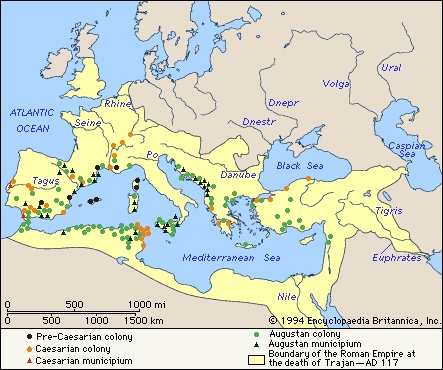 Rome's conquest of the Mediterranean world illustrates the idea of a tacit or embedded strategy. Rome's ruthlessness in dividing its enemies, in creating patron-client relationships that would guarantee its intervention in more civil wars, its cleverness in siding with rebels or dissidents in foreign states, and its relentlessness in pursuing to annihilation its most serious enemies showed remarkable continuity throughout the republic.
Rome's conquest of the Mediterranean world illustrates the idea of a tacit or embedded strategy. Rome's ruthlessness in dividing its enemies, in creating patron-client relationships that would guarantee its intervention in more civil wars, its cleverness in siding with rebels or dissidents in foreign states, and its relentlessness in pursuing to annihilation its most serious enemies showed remarkable continuity throughout the republic.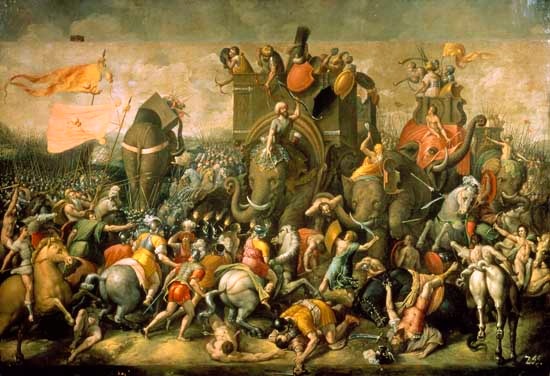 The Second Punic War (Punic War, Second) (218–201 BC) illustrates these propositions well. There were only two leading figures of note in Rome throughout the war: Quintus Fabius Maximus Verrucosus (Cunctator) (Fabius Maximus Verrucosus, Quintus), who delayed and bought time while Rome recovered from its initial disastrous defeats, and Scipio Africanus the Elder, who delivered the final blow of the Second Punic War to Carthage at the Battle of Zama (Zama, Battle of) (202 BC). It does not appear that either was the equal of Hannibal, the brilliant Carthaginian general who administered defeat after defeat to superior Roman armies on their home turf. More important than personalities, however, was Rome's unflinching determination to pursue its enemies, quite literally to the death. Hannibal was cornered in the Bithynian (Bithynia) village of Libyssa and committed suicide, following a demand from Rome that he be turned over by Antiochus III of Syria, whom he had aided in rebellion against Rome following the defeat of Carthage. And Carthage itself—long the target of the grim senator Marcus Porcius Cato (Cato, Marcus Porcius)'s insistence that it be destroyed (he famously took to ending every oration with the words “Ceterum censeo delendam esse Carthaginem,” which translate as “Besides which, my opinion is that Carthage must be destroyed”)—was wiped out of existence in the Third Punic War (Punic War, Third) (149–146 BC), which was provoked by Rome for the purpose of finishing off its most dangerous potential opponent.
The Second Punic War (Punic War, Second) (218–201 BC) illustrates these propositions well. There were only two leading figures of note in Rome throughout the war: Quintus Fabius Maximus Verrucosus (Cunctator) (Fabius Maximus Verrucosus, Quintus), who delayed and bought time while Rome recovered from its initial disastrous defeats, and Scipio Africanus the Elder, who delivered the final blow of the Second Punic War to Carthage at the Battle of Zama (Zama, Battle of) (202 BC). It does not appear that either was the equal of Hannibal, the brilliant Carthaginian general who administered defeat after defeat to superior Roman armies on their home turf. More important than personalities, however, was Rome's unflinching determination to pursue its enemies, quite literally to the death. Hannibal was cornered in the Bithynian (Bithynia) village of Libyssa and committed suicide, following a demand from Rome that he be turned over by Antiochus III of Syria, whom he had aided in rebellion against Rome following the defeat of Carthage. And Carthage itself—long the target of the grim senator Marcus Porcius Cato (Cato, Marcus Porcius)'s insistence that it be destroyed (he famously took to ending every oration with the words “Ceterum censeo delendam esse Carthaginem,” which translate as “Besides which, my opinion is that Carthage must be destroyed”)—was wiped out of existence in the Third Punic War (Punic War, Third) (149–146 BC), which was provoked by Rome for the purpose of finishing off its most dangerous potential opponent.Medieval strategy
 Most military histories skim over the Middle Ages, incorrectly believing it to be a period in which strategy was displaced by a combination of banditry and religious fanaticism. Certainly, the sources for medieval strategic thought lack the literary appeal of the classic histories of ancient Greece and Rome. Nevertheless, Europe's medieval period may be of especial relevance to the 21st century. In the Middle Ages there existed a wide variety of entities—from empires to embryonic states to independent cities to monastic orders and more—that brought different forms of military power to bear in pursuit of various aims. Unlike the power structures in the 18th and 19th centuries, military organizations, equipment, and techniques varied widely in the medieval period: the pikemen (pike) of Swiss villages were quite different from the mounted chivalry of western Europe, who in turn had little in common with the light cavalry of the Arabian heartland. The strategic predicament of the Byzantine Empire—beset by enemies that ranged from the highly civilized Persian and Arab empires to marauding barbarians—required, and elicited, a complex strategic response, including a notable example of dependence on high technology. Greek fire, a liquid incendiary agent, enabled the embattled Byzantine Empire to beat off attacking fleets and preserve its existence until the early 15th century.
Most military histories skim over the Middle Ages, incorrectly believing it to be a period in which strategy was displaced by a combination of banditry and religious fanaticism. Certainly, the sources for medieval strategic thought lack the literary appeal of the classic histories of ancient Greece and Rome. Nevertheless, Europe's medieval period may be of especial relevance to the 21st century. In the Middle Ages there existed a wide variety of entities—from empires to embryonic states to independent cities to monastic orders and more—that brought different forms of military power to bear in pursuit of various aims. Unlike the power structures in the 18th and 19th centuries, military organizations, equipment, and techniques varied widely in the medieval period: the pikemen (pike) of Swiss villages were quite different from the mounted chivalry of western Europe, who in turn had little in common with the light cavalry of the Arabian heartland. The strategic predicament of the Byzantine Empire—beset by enemies that ranged from the highly civilized Persian and Arab empires to marauding barbarians—required, and elicited, a complex strategic response, including a notable example of dependence on high technology. Greek fire, a liquid incendiary agent, enabled the embattled Byzantine Empire to beat off attacking fleets and preserve its existence until the early 15th century.In Delbrück's parlance, medieval warfare demonstrated both types of strategy—overthrow and exhaustion. The Crusader states (Crusades) of the Middle East were gradually exhausted and overwhelmed by constant raiding warfare and the weight of numbers. On the other hand, one or two decisive battles, most notably the ruinous disaster at the Battle of Ḥaṭṭīn (Ḥaṭṭīn, Battle of) (1187), doomed the Crusader kingdom of Jerusalem (Jerusalem, kingdom of), and earlier the Battle of Manzikert (Manzikert, Battle of) (1071) was a blow from which the Byzantine Empire never recovered fully.
Medieval strategists made use of many forms of warfare, including set-piece battles, of course, as well as the petty warfare of raiding and harassment. But they also improved a third type of warfare—the siege, or, more properly, poliorcetics, the art of both fortification and siege warfare. Castles (castle) and fortified cities could eventually succumb to starvation or to an assault using battering rams (battering ram), catapults (catapult), and mining (also known as sapping, a process in which tunnels are dug beneath fortification walls preparatory to using fire or explosives to collapse the structure), but progress in siege warfare was almost always slow and painful. On the whole, it was substantially easier to defend a fortified position than to attack one, and even a small force could achieve a disproportionate military advantage by occupying a defensible place. These facts, combined with the primitive public-health practices of many medieval armies, the poor condition of road networks, and the poverty of an agricultural system that did not generate much of a surplus upon which armies could feed, meant limits on the tempo of war and in some measure on its decisiveness as well—at least in Europe.
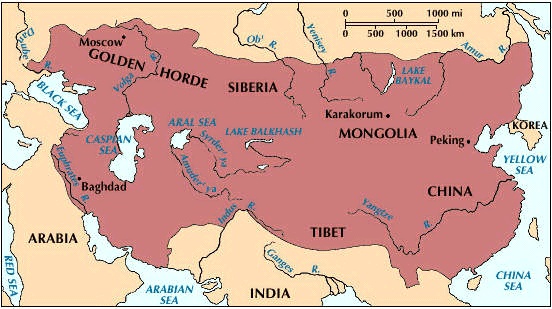 The story was different in East and Central Asia, particularly in China, where the mobility and discipline of Mongol armies (to take only the most notable example) and the relatively open terrain allowed for the making and breaking not only of states but of societies by mobile cavalry armies bent on conquest and pillage. Strategy emerged in the contest for domestic political leadership (as in Oda Nobunaga's unification of much of Japan during the 16th century) and in attempts either to limit the irruptions of warlike nomads into civilized and cultivated areas or to expand imperial power (as in the rise of China's Qing dynasty in the 17th century). However, after the closure of Japan to the world at the end of the 16th century and the weakening of the Qing dynasty in the 19th century, strategy became more a matter of policing and imperial preservation than of interstate struggle among comparable powers. It was in Europe that a competitive state system, fueled by religious and dynastic tensions and making use of developing civilian and military technologies, gave birth to strategy as it is known today.
The story was different in East and Central Asia, particularly in China, where the mobility and discipline of Mongol armies (to take only the most notable example) and the relatively open terrain allowed for the making and breaking not only of states but of societies by mobile cavalry armies bent on conquest and pillage. Strategy emerged in the contest for domestic political leadership (as in Oda Nobunaga's unification of much of Japan during the 16th century) and in attempts either to limit the irruptions of warlike nomads into civilized and cultivated areas or to expand imperial power (as in the rise of China's Qing dynasty in the 17th century). However, after the closure of Japan to the world at the end of the 16th century and the weakening of the Qing dynasty in the 19th century, strategy became more a matter of policing and imperial preservation than of interstate struggle among comparable powers. It was in Europe that a competitive state system, fueled by religious and dynastic tensions and making use of developing civilian and military technologies, gave birth to strategy as it is known today.Strategy in the early modern period
 The development of state structures, particularly in western Europe, during the 16th and 17th centuries gave birth to strategy in its modern form. “War makes the state, and the state makes war,” in the words of American historian Charles Tilly. The development of centralized bureaucracies and, in parallel, the taming of independent aristocratic classes yielded ever more powerful armies and navies. As the system of statecraft gradually became secularized—witness the careful policy pursued by France under the great cardinal Armand-Jean du Plessis, duc de Richelieu (Richelieu, Armand-Jean du Plessis, cardinal et duc de), chief minister to King Louis XIII from 1624 to 1642, who was willing to persecute Protestants at home while supporting Protestant powers abroad—so too did strategy become more subtle. The rapine and massacre of the Thirty Years' War (1618–48) yielded to wars waged for raison d'état, to aggrandize the interests of the ruler and through him the state. In this as in many other ways, the early modern period witnessed a return to Classical roots. Even as drill masters studied ancient Roman textbooks to recover the discipline that made the legions (legion) formidable instruments of policy, so too did strategists return to a Classical world in which the logic of foreign policy shaped the conduct of war.
The development of state structures, particularly in western Europe, during the 16th and 17th centuries gave birth to strategy in its modern form. “War makes the state, and the state makes war,” in the words of American historian Charles Tilly. The development of centralized bureaucracies and, in parallel, the taming of independent aristocratic classes yielded ever more powerful armies and navies. As the system of statecraft gradually became secularized—witness the careful policy pursued by France under the great cardinal Armand-Jean du Plessis, duc de Richelieu (Richelieu, Armand-Jean du Plessis, cardinal et duc de), chief minister to King Louis XIII from 1624 to 1642, who was willing to persecute Protestants at home while supporting Protestant powers abroad—so too did strategy become more subtle. The rapine and massacre of the Thirty Years' War (1618–48) yielded to wars waged for raison d'état, to aggrandize the interests of the ruler and through him the state. In this as in many other ways, the early modern period witnessed a return to Classical roots. Even as drill masters studied ancient Roman textbooks to recover the discipline that made the legions (legion) formidable instruments of policy, so too did strategists return to a Classical world in which the logic of foreign policy shaped the conduct of war.For a time, the invention of gunpowder and the development of the newly centralized state seemed to shatter the dominance of defenses: medieval castles could not withstand the battering of late 15th- or early 16th-century artillery. But the invention of carefully designed geometric fortifications (known as the trace italienne) restored much of the balance. A well-fortified city was once again a powerful obstacle to movement, one that would require a great deal of time and trouble to reduce. The construction of belts of fortified cities along a country's frontier was the keynote of strategists' peacetime conceptions.
Yet there was a difference. Poliorcetics was no longer a haphazard art practiced with greater or lesser virtuosic skill but increasingly a science in which engineering and geometry played a central role; cities fell not to starvation but to methodical bombardment, mining, and, if necessary, assault. Indeed, by the middle of the 18th century, most sieges were highly predictable and even ritualized affairs, culminating in surrender before the final desperate attack. Armies also began to acquire the rudiments, at least, of modern logistical and health systems; though they were not quite composed of interchangeable units, they at least comprised a far more homogeneous and disciplined set of suborganizations than they had since Roman times. And, in a set of developments rarely noticed by military historians, the development of ancillary sciences, such as the construction of roads and highways and cartography, made the movement of military organizations not only easier but more predictable than ever before.
 Strategy began to seem more like technique than art, science rather than craft. Practitioners, such as the 17th-century French engineer Sébastien Le Prestre de Vauban (Vauban, Sébastien Le Prestre de) and the 18th-century French general and military historian Henri, baron de Jomini (Jomini, Henri, baron de), began to make of war an affair of rules, principles, and even laws. Not surprisingly, these developments coincided with the emergence of military schools and an increasingly scientific and reforming bent—artillerists studied trigonometry, and officers studied military engineering. Military literature flourished: Essai général de tactique (1772), by Jacques Antoine Hippolyte, comte de Guibert, was but one of a number of thoughtful texts that systematized military thought, although Guibert (unusual for writers of his time) had inklings of larger changes in war lying ahead. War had become a profession, to be mastered by dint of application and intellectual, as well as physical, labour.
Strategy began to seem more like technique than art, science rather than craft. Practitioners, such as the 17th-century French engineer Sébastien Le Prestre de Vauban (Vauban, Sébastien Le Prestre de) and the 18th-century French general and military historian Henri, baron de Jomini (Jomini, Henri, baron de), began to make of war an affair of rules, principles, and even laws. Not surprisingly, these developments coincided with the emergence of military schools and an increasingly scientific and reforming bent—artillerists studied trigonometry, and officers studied military engineering. Military literature flourished: Essai général de tactique (1772), by Jacques Antoine Hippolyte, comte de Guibert, was but one of a number of thoughtful texts that systematized military thought, although Guibert (unusual for writers of his time) had inklings of larger changes in war lying ahead. War had become a profession, to be mastered by dint of application and intellectual, as well as physical, labour.The French Revolution (French revolutionary and Napoleonic wars) and the emergence of modern strategies
The eruption of the French Revolution in 1789 delivered a blow to the emerging rationalistic conception of strategy from which it never quite recovered, though some of its precepts were echoed by later schools of thought, such as those of Jomini in his great work The Art of War (1838) and the systems analysts of the 1960s and afterward. The techniques of the armies of France under the Revolutionary government and later the Directory (1795–99) and Napoleon (Napoleon I) (1799–1814/15) were, superficially, those of the ancien régime: drill manuals and artillery technique drew heavily on concepts outlined in the days of Louis XVI, the last pre-Revolutionary French king. But the energy unleashed by revolutionary passion, the resources unlocked by mass conscription and a powerful state, and the fervour that followed from ideological zeal transformed strategy.
 The author who understood this best was the Prussian (Prussia) Carl von Clausewitz (Clausewitz, Carl von), whose military experience spanned the years from 1793 to 1815, a period in which Europe was convulsed by a series of wars centring on France. The Prussian general's masterpiece On War (1832) appeared shortly after his death. It described an approach to strategy that would, with modifications, last at least through the middle of the 20th century.
The author who understood this best was the Prussian (Prussia) Carl von Clausewitz (Clausewitz, Carl von), whose military experience spanned the years from 1793 to 1815, a period in which Europe was convulsed by a series of wars centring on France. The Prussian general's masterpiece On War (1832) appeared shortly after his death. It described an approach to strategy that would, with modifications, last at least through the middle of the 20th century.As noted in the section Fundamentals (strategy), Clausewitz combined Enlightenment rationalism with a deep appreciation of the turbulent and uncontrollable forces unleashed by the new era. For him, strategy was always the product of tension between three poles: (1) the government, which seeks to use war rationally as an instrument of policy, (2) the military, and in particular its commanders, whose skill and abilities reflect the unquantifiable element of creativity, and (3) the people, whose animus and determination are only partly subject to the control of the state. Thus, strategy is at once a matter of calculation and of instinct, a product of deliberation and purpose on the one hand and of emotion, uncertainty, and interaction on the other.
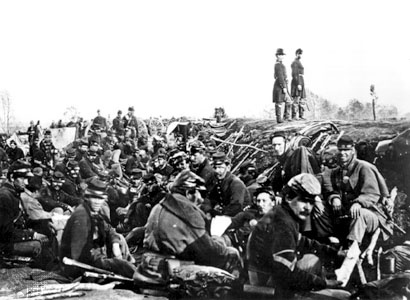 The wars of the mid-19th century, in particular the wars of German unification (Germany) (Prussia's wars with Denmark, Austria, and France in 1864, 1866, and 1870–71, respectively) and the American Civil War (1861–65), marked a peak of Clausewitzian strategy. German (Germany) Chancellor Otto von Bismarck (Bismarck, Otto von) and U.S. Pres. Abraham Lincoln (Lincoln, Abraham) successfully waged war for great stakes. Exemplary Clausewitzian leaders, they used the new instruments of the time—the mass army, now sustained year-round by early industrial economies that could ship vast quantities of matériel to distant fronts—to achieve their purposes.
The wars of the mid-19th century, in particular the wars of German unification (Germany) (Prussia's wars with Denmark, Austria, and France in 1864, 1866, and 1870–71, respectively) and the American Civil War (1861–65), marked a peak of Clausewitzian strategy. German (Germany) Chancellor Otto von Bismarck (Bismarck, Otto von) and U.S. Pres. Abraham Lincoln (Lincoln, Abraham) successfully waged war for great stakes. Exemplary Clausewitzian leaders, they used the new instruments of the time—the mass army, now sustained year-round by early industrial economies that could ship vast quantities of matériel to distant fronts—to achieve their purposes.Yet, even in their successes, changes were already beginning to threaten the very possibility of Clausewitzian strategy. Mass mobilization produced two effects: a level of societal engagement that made moderation and compromise in peacemaking difficult and conscripted armies that were becoming difficult to handle in the field. “Very large assemblies of units are in and of themselves a catastrophe,” declared Prussian Gen. Helmuth von Moltke (Moltke, Helmuth von) in his Instructions for Large Unit Commanders (1869). Furthermore, as military organizations became more sophisticated and detached from society, tension between political leaders and senior commanders grew. The advent of the telegraph compounded this latter development; a prime minister or president could now communicate swiftly with his generals, and newspaper correspondents could no less quickly with their home offices. Public opinion was more directly engaged in warfare than ever before, and generals found themselves making decisions with half a mind to the press coverage that was being read by an expanding audience of literate citizens. And, of course, politicians paid no less heed to a public that was intensely engaged in political debates. These developments portended a challenge for strategy. War had never quite been the lancet in the hands of a diplomatic surgeon; it was now, however, more like a great bludgeon, wielded with the greatest difficulty by statesmen who found others plucking at their grip.
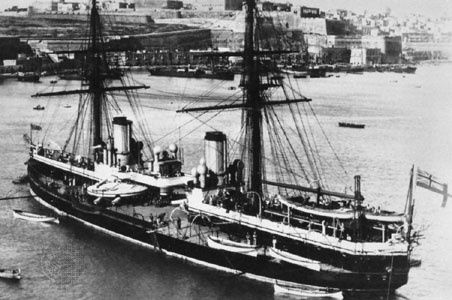 Compounding these challenges was the advent of technology as an important and distinct element in war. The 18th century had experienced great stability in the tools of war, on both land and sea. The musket of the early 18th century did not differ materially from the firearm carried into battle by one of the duke of Wellington (Wellington, Arthur Wellesley, 1st duke of, marquess of Douro, marquess of Wellington, earl of Wellington, Viscount Wellington of Talavera and of Wellington, Baron Douro or Wellesley)'s British soldiers 100 years later; similarly, British Adm. Horatio Nelson (Nelson, Horatio Nelson, Viscount)'s flagship HMS Victory at the Battle of Trafalgar (Trafalgar, Battle of) (1805) had decades of service behind it before that great contest. But by the mid-19th century this had changed. On land the advent of the rifle—modified and improved by the development of breech loading, metal cartridges, and later smokeless gunpowder—was accompanied as well by advances in artillery and even early types of machine guns (machine gun). At sea changes were even more dramatic: steam replaced sail, and iron and steel replaced wood and canvas. Obsolescence now occurred within years, not decades, and technological experts assumed new prominence.
Compounding these challenges was the advent of technology as an important and distinct element in war. The 18th century had experienced great stability in the tools of war, on both land and sea. The musket of the early 18th century did not differ materially from the firearm carried into battle by one of the duke of Wellington (Wellington, Arthur Wellesley, 1st duke of, marquess of Douro, marquess of Wellington, earl of Wellington, Viscount Wellington of Talavera and of Wellington, Baron Douro or Wellesley)'s British soldiers 100 years later; similarly, British Adm. Horatio Nelson (Nelson, Horatio Nelson, Viscount)'s flagship HMS Victory at the Battle of Trafalgar (Trafalgar, Battle of) (1805) had decades of service behind it before that great contest. But by the mid-19th century this had changed. On land the advent of the rifle—modified and improved by the development of breech loading, metal cartridges, and later smokeless gunpowder—was accompanied as well by advances in artillery and even early types of machine guns (machine gun). At sea changes were even more dramatic: steam replaced sail, and iron and steel replaced wood and canvas. Obsolescence now occurred within years, not decades, and technological experts assumed new prominence.Military organizations did not shun new technologies; they embraced them. But very few officers had the time, or perhaps the inclination, to mull over their broader implications for the conduct of war. Ironically, this becomes clearest in the works of the great naval (naval warfare) theorist of the age, the American Alfred Thayer Mahan (Mahan, Alfred Thayer). His vast corpus of work on naval history and contemporary naval affairs shaped the understanding of sea power not only in his own country but in others too, including Britain and Germany. Mahan made a powerful case that a dominant naval power, through its exercise of command of the sea, can subjugate the rest. In this respect, he argued, sea power was very different from land power: there was a vast difference between first- and second-rank sea powers but little difference between such land powers. Yet, although Mahan's doctrines found favour among leaders busily constructing navies of steam-propelled ships, all of his work rested on the experience of navies driven by sail. His theory, resting as it did on the technology of a previous era, underplayed the new and unprecedented threats posed by mines (mine), torpedoes (torpedo), and submarines (submarine). There were other naval theorists, to be sure, including the Englishman Julian Corbett, who took a different approach, emphasizing the contingent nature of maritime supremacy and the value of joint operations. However, only the group of French theorists known collectively as the Jeune École (“Young School”) looked on the new naval technologies as anything other than modern tools to be fit into frameworks established in bygone times.
Strategy in the age of total war
It was during World War I that technological (military technology) forces yielded a crisis in the conduct of strategy and strategic thought. Mass mobilization and technologies that had outpaced the abilities of organizations to absorb them culminated in slaughter and deadlock on European battlefields. How was it possible to make war still serve political ends? For the most part, the contestants fell back on a grim contest of endurance, hoping that attrition—a modern term for slaughter—would simply cause the opponents' collapse and a victory by diktat. Only the British attempted large-scale maneuvers: by launching campaigns in several peripheral theatres, including the Middle East, Greece, and most notably Turkey. These all failed, although the last—a naval attack and then two amphibious assaults on the Gallipoli Peninsula (see Dardanelles Campaign)—had moments of promise. These reflected, at any rate, a strategic concept other than attrition: the elimination of the opposing coalition's weakest member. In the end, though, the war hinged on the main contest on the Western Front. It was there, in the fall of 1918, that the struggle was decided by the collapse of German forces after two brilliant but costly German offensives in the spring and summer of that year, followed by a remorseless set of Allied counterattacks.
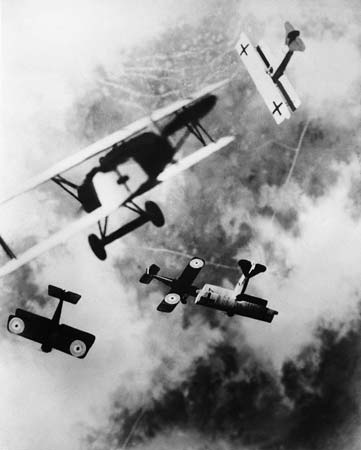 The brute strategy of attrition did not mean a disregard of the advantages offered by technology. The combatants turned to every device of modern science—from radio to poison gas, machine gun to torpedo, the internal combustion engine to aviation—to improve their abilities to make war. Peace arose, nonetheless, as a result of exhaustion and collapse, not an adroit matching of means to ends. Technology tantalized soldiers with the possibility of a decisive advantage that never materialized, while the passions of fully mobilized populations precluded compromise agreements that might have rescued the bleeding countries of Europe from their suffering.
The brute strategy of attrition did not mean a disregard of the advantages offered by technology. The combatants turned to every device of modern science—from radio to poison gas, machine gun to torpedo, the internal combustion engine to aviation—to improve their abilities to make war. Peace arose, nonetheless, as a result of exhaustion and collapse, not an adroit matching of means to ends. Technology tantalized soldiers with the possibility of a decisive advantage that never materialized, while the passions of fully mobilized populations precluded compromise agreements that might have rescued the bleeding countries of Europe from their suffering.Postwar strategic thinking concerned itself primarily with improving the art of war. To be sure, some analysts concluded that war had become so ruinous that it had lost any utility as an instrument of policy. More dangerously, there were those—the former military leader of imperial Germany Erich Ludendorff (Ludendorff, Erich) foremost among them—who concluded that henceforth war would subsume politics, rather than the other way around. And all recognized that strategy in the age of total warfare would encompass the mobilization of populations in a variety of ways, to include not merely the refinement of the mass army but also the systematic exploitation of scientific expertise to improve weapons.
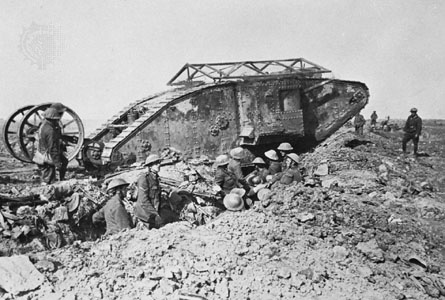 Still, the keynote of the period leading up to World War II was the quest for a technological remedy to the problem of deadlock. Armoured (armoured vehicle) warfare had its proponents, as did aerial bombardment. Tanks (tank) and airplanes had made a tentative debut during World War I, and, had the war lasted a little longer, they certainly would have demonstrated abilities well beyond those that were shown during the war. The advocates of armoured warfare resided for the most part in Britain, which pioneered the creation of experimental armoured forces in the early 1920s. J.F.C. Fuller (Fuller, J F C) in particular, a brilliant but irascible major general and the architect of what would have been the British Army's war plan in 1919, made a powerful case that tanks, supported by other arms, would be able to achieve breakthroughs and rapid advances unheard of throughout most of the Great War. His voice was echoed in other countries. One such prophet was a French colonel who had spent most of the war in a German prisoner-of-war camp. Charles de Gaulle (Gaulle, Charles de)'s plea for a mechanized French army (The Army of the Future; 1934) fell on deaf ears not so much because the French army opposed tanks (it did not) but rather because he called for a small, professional, mechanized army capable of offensive action. France's military and political leaders, accustomed to an army that had a long and deeply ingrained conscript tradition, and preferring a strategic posture of defense against invasion, was uninterested.
Still, the keynote of the period leading up to World War II was the quest for a technological remedy to the problem of deadlock. Armoured (armoured vehicle) warfare had its proponents, as did aerial bombardment. Tanks (tank) and airplanes had made a tentative debut during World War I, and, had the war lasted a little longer, they certainly would have demonstrated abilities well beyond those that were shown during the war. The advocates of armoured warfare resided for the most part in Britain, which pioneered the creation of experimental armoured forces in the early 1920s. J.F.C. Fuller (Fuller, J F C) in particular, a brilliant but irascible major general and the architect of what would have been the British Army's war plan in 1919, made a powerful case that tanks, supported by other arms, would be able to achieve breakthroughs and rapid advances unheard of throughout most of the Great War. His voice was echoed in other countries. One such prophet was a French colonel who had spent most of the war in a German prisoner-of-war camp. Charles de Gaulle (Gaulle, Charles de)'s plea for a mechanized French army (The Army of the Future; 1934) fell on deaf ears not so much because the French army opposed tanks (it did not) but rather because he called for a small, professional, mechanized army capable of offensive action. France's military and political leaders, accustomed to an army that had a long and deeply ingrained conscript tradition, and preferring a strategic posture of defense against invasion, was uninterested.Herein lay the difficulty of the armoured warfare advocates in the interwar period. They saw the possibilities of an instrument for which there was no obvious use or that would run against powerful norms. The British, though anxious about imperial defense, were far less worried about Germany and allowed their armoured force to wither. The United States had the industrial tools but no conceivable use for tank divisions. The Germans were, through 1935 at any rate, only able to experiment in secret with tanks and their accompaniments. Thus, until the mid-1930s, while thinking about this new instrument of warfare proceeded, actual development of substantial field (as opposed to experimental) forces languished except among a few maverick officers.
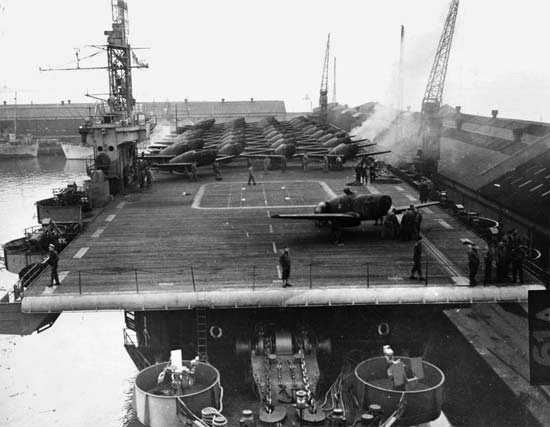 air warfare was a different matter. Aircraft had proven invaluable during World War I for a variety of missions—reconnaissance, artillery spotting, strafing, bombing, and even transport. All major powers rushed to acquire a variety of combat aircraft and to experiment with new types. At sea the question was one of developing the right techniques and procedures as well as technology for operating aircraft carriers (aircraft carrier). On land the issue became one of the role of aerial bombardment.
air warfare was a different matter. Aircraft had proven invaluable during World War I for a variety of missions—reconnaissance, artillery spotting, strafing, bombing, and even transport. All major powers rushed to acquire a variety of combat aircraft and to experiment with new types. At sea the question was one of developing the right techniques and procedures as well as technology for operating aircraft carriers (aircraft carrier). On land the issue became one of the role of aerial bombardment.In the view of some proponents of air warfare (most notably the Italian Gen. Giulio Douhet (Douhet, Giulio)), the advent of the long-range bomber had radically changed warfare: warfare, and hence strategy, would henceforth rest on the application of force directly against civilian targets. In some respects this was a mere extension of the idea that in total war the strategic goal was to break the will of a society to resist. Previously, however, it had been thought that this came about through the intermediary of military engagements, in which armed forces clashed until the price in blood and treasure became too great for one side to bear. Henceforth, Douhet and others argued, force-on-force had become irrelevant; in the words of British Prime Minister Stanley Baldwin (Baldwin, Stanley, 1st Earl Baldwin Of Bewdley, Viscount Corvedale Of Corvedale), “The bomber will always get through.” Not everyone acted on this belief, although few openly denied it. The fear of the effects of aerial bombardment of largely undefended cities played a powerful role in shaping public and governmental attitudes to the Munich agreement of 1938; it did not, however, prevent countries from continuing to develop conventional land and naval forces.
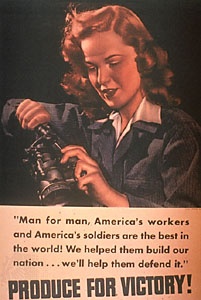
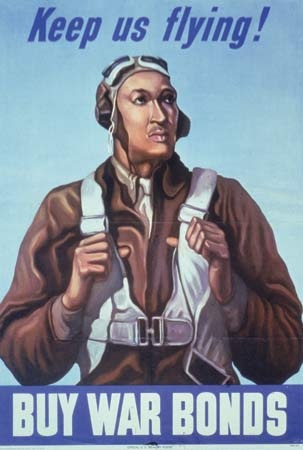 The new weapons and operational doctrines—that is, the combination of organization and techniques embodied in the armoured division on land or the carrier task force at sea—were tested in World War II. This conflict represented the culmination of trends in strategic thought and behaviour manifest since the early 19th century. The mobilization of populations had become not merely total but scientific: governments managed to squeeze the last ounce of effectiveness out of men and women of all ages, who endured rationing, extended workweeks, and protracted military service to an extent unimaginable even 30 years before. Those governments that were most efficient at doing so—the U.S., the British, and to some extent the Soviet (Union of Soviet Socialist Republics)—defeated those that were less relentlessly rational. It was, ironically perhaps, the United States and Britain that adopted large-scale mobilization of women in war production and auxiliary military service, while Germany and Japan flinched at such an upheaval in social roles. In some cases, older attitudes to war, most notably a Japanese warrior ethic that paid little heed to mundane matters such as logistics or field medicine, proved dysfunctional. German and Japanese strategy often emanated from wild ideological beliefs, leading to debacles when sheer will proved unequal to carefully amassed and directed resources on the other side. As a result, strategy as a rational mode of thought seemed to triumph.
The new weapons and operational doctrines—that is, the combination of organization and techniques embodied in the armoured division on land or the carrier task force at sea—were tested in World War II. This conflict represented the culmination of trends in strategic thought and behaviour manifest since the early 19th century. The mobilization of populations had become not merely total but scientific: governments managed to squeeze the last ounce of effectiveness out of men and women of all ages, who endured rationing, extended workweeks, and protracted military service to an extent unimaginable even 30 years before. Those governments that were most efficient at doing so—the U.S., the British, and to some extent the Soviet (Union of Soviet Socialist Republics)—defeated those that were less relentlessly rational. It was, ironically perhaps, the United States and Britain that adopted large-scale mobilization of women in war production and auxiliary military service, while Germany and Japan flinched at such an upheaval in social roles. In some cases, older attitudes to war, most notably a Japanese warrior ethic that paid little heed to mundane matters such as logistics or field medicine, proved dysfunctional. German and Japanese strategy often emanated from wild ideological beliefs, leading to debacles when sheer will proved unequal to carefully amassed and directed resources on the other side. As a result, strategy as a rational mode of thought seemed to triumph.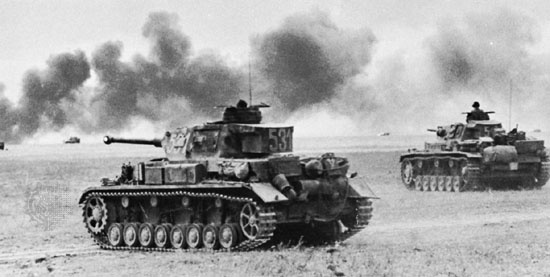 The new tools of warfare worked well, though not quite as expected. Attacks on cities and economic targets proved brutally effective, but only over time. The contest between offense and defense continued, and military leaders discovered that air forces had to win a battle against opposing airmen before they could deliver crushing force against an opponent's civilian population. On land, new formations built around the tank increased the speed of warfare and delivered some extraordinary outcomes—most notably, the overthrow of France in 1940 in a campaign that was decided in less than two weeks of hard fighting and completed in less than two months.
The new tools of warfare worked well, though not quite as expected. Attacks on cities and economic targets proved brutally effective, but only over time. The contest between offense and defense continued, and military leaders discovered that air forces had to win a battle against opposing airmen before they could deliver crushing force against an opponent's civilian population. On land, new formations built around the tank increased the speed of warfare and delivered some extraordinary outcomes—most notably, the overthrow of France in 1940 in a campaign that was decided in less than two weeks of hard fighting and completed in less than two months. The development of machine-centred warfare had restored mobility to the battlefield; science and the arts of administration had allowed those techniques to be fully applied; and modern politics meant that the goals of war had become not the seizure of isolated provinces for barter but nothing less than the survival of states and even peoples. Every auxiliary science and discipline, from weather forecasting to electronics, from abstruse forms of mathematics to modern advertising, was mobilized to its fullest. At the pinnacle, the governments that won the war did so with large, highly skilled organizations that brought together soldiers and civilians and that concluded many of the war's largest decisions in international conferences supported by hundreds, indeed thousands, of support personnel. Strategic decisions—the launching of the Anglo-American invasion of Normandy (Normandy Invasion) on June 6, 1944, for example—emerged through carefully weighed calculations of many kinds, from soil engineering to the intricacies of coalition politics.
The development of machine-centred warfare had restored mobility to the battlefield; science and the arts of administration had allowed those techniques to be fully applied; and modern politics meant that the goals of war had become not the seizure of isolated provinces for barter but nothing less than the survival of states and even peoples. Every auxiliary science and discipline, from weather forecasting to electronics, from abstruse forms of mathematics to modern advertising, was mobilized to its fullest. At the pinnacle, the governments that won the war did so with large, highly skilled organizations that brought together soldiers and civilians and that concluded many of the war's largest decisions in international conferences supported by hundreds, indeed thousands, of support personnel. Strategic decisions—the launching of the Anglo-American invasion of Normandy (Normandy Invasion) on June 6, 1944, for example—emerged through carefully weighed calculations of many kinds, from soil engineering to the intricacies of coalition politics.Strategy in the age of nuclear weapons (nuclear weapon)
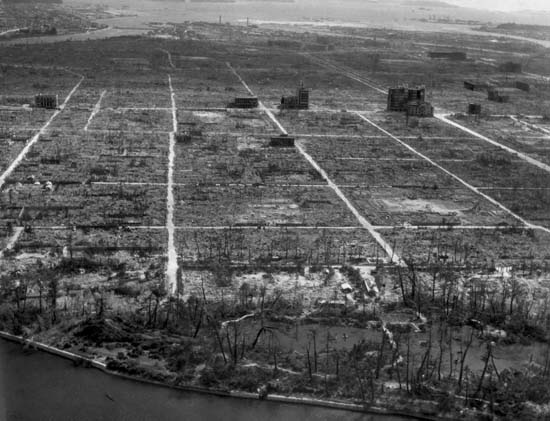 The period from 1939 to 1945 represented the acme of the old style of war, and with it strategy as the purposeful practice of matching military might with political objectives. In its aftermath a number of challenges to this classical paradigm of war emerged, the first in the closing days of World War II. The dropping of atomic bombs (atomic bomb) on Hiroshima and Nagasaki, Japan, inaugurated a new era of war, many observers felt. Bernard Brodie, an American military historian and pioneering thinker about nuclear weapons, declared in 1946:Thus far the chief purpose of our military establishment has been to win wars. From now on its chief purpose must be to avert them. It can have almost no other useful purpose.
The period from 1939 to 1945 represented the acme of the old style of war, and with it strategy as the purposeful practice of matching military might with political objectives. In its aftermath a number of challenges to this classical paradigm of war emerged, the first in the closing days of World War II. The dropping of atomic bombs (atomic bomb) on Hiroshima and Nagasaki, Japan, inaugurated a new era of war, many observers felt. Bernard Brodie, an American military historian and pioneering thinker about nuclear weapons, declared in 1946:Thus far the chief purpose of our military establishment has been to win wars. From now on its chief purpose must be to avert them. It can have almost no other useful purpose.If that were indeed the case, a strategic revolution would have occurred.
In some ways, nuclear weapons merely made effective the earlier promise of air power—overwhelming violence delivered at an opponent's cities, bypassing its military forces. Nuclear weapons were different, however, in their speed, their destructiveness, and the apparent absence of countervailing measures. Furthermore, the expense and high technology of nuclear weapons suddenly created two classes of powers in the world: those who wielded these new tools of war and those who did not.
In the ensuing decades, nuclear facts and nuclear strategy had a peculiarly uneasy coexistence. Many of the realities of nuclear weapons—how many were in each arsenal, the precise means for their delivery, the reliability of the devices themselves and of the planes, missiles, and crews that had to deliver them—were obscure. So too were the plans for their use, although a combination of declassification of early U.S. war plans and the flood of information that came out of the Warsaw Pact countries following the collapse of the Soviet Union in 1991 illuminated some of the darkness.
Nuclear strategic thought, however, was far less murky. Those who developed it stemmed less from the military community (with a few exceptions, such as French Gen. Pierre Gallois) than from the civilian academic world and less from the discipline of history than from economics or political science. An elaborate set of doctrines developed to explain how nuclear strategy worked. One such doctrine was “mutual assured destruction” (MAD), the notion that the purpose of nuclear strategy was to create a stable world in which two opponents would realize that neither could hope to attack the other successfully and that in any war both would suffer effective obliteration.
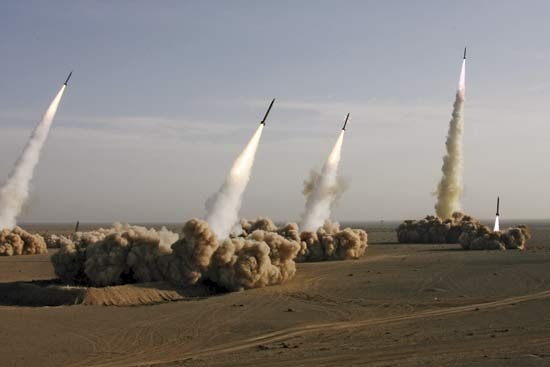 In all cases, the centre of gravity lay with the problem of deterrence, the prevention of adverse enemy behaviours rather than concrete measures to block, reverse, or punish them. Strategic thought now entered a wilderness of mirrors: What behaviour could be deterred, and what could not? How did one know when deterrence had worked? Was it bad to defend one's population in any way—with civil defense or active defenses such as antiballistic missiles—because that might weaken mutual deterrence? The problem became more grave as additional countries acquired nuclear weapons: Were Chinese leaders deterred by the same implicit threats that worked on U.S. and Soviet leaders? For that matter, did Indians and Pakistanis view each other in the same way that Americans and Soviets viewed each other?
In all cases, the centre of gravity lay with the problem of deterrence, the prevention of adverse enemy behaviours rather than concrete measures to block, reverse, or punish them. Strategic thought now entered a wilderness of mirrors: What behaviour could be deterred, and what could not? How did one know when deterrence had worked? Was it bad to defend one's population in any way—with civil defense or active defenses such as antiballistic missiles—because that might weaken mutual deterrence? The problem became more grave as additional countries acquired nuclear weapons: Were Chinese leaders deterred by the same implicit threats that worked on U.S. and Soviet leaders? For that matter, did Indians and Pakistanis view each other in the same way that Americans and Soviets viewed each other? It is likely (although in the nature of things, unprovable) that the looming presence of nuclear weapons prevented a U.S.-Soviet conflict during the Cold War. On the other hand, the highly probable possession of nuclear weapons by Israel in 1973 did not deter an Egyptian-Syrian conventional assault on that country, nor did Britain's nuclear arsenal prevent Argentina from invading the Falkland Islands in 1982 (see Falkland Islands War). For that matter, North Vietnam seems to have disregarded American nuclear weapons during the Vietnam War (1954–75).
It is likely (although in the nature of things, unprovable) that the looming presence of nuclear weapons prevented a U.S.-Soviet conflict during the Cold War. On the other hand, the highly probable possession of nuclear weapons by Israel in 1973 did not deter an Egyptian-Syrian conventional assault on that country, nor did Britain's nuclear arsenal prevent Argentina from invading the Falkland Islands in 1982 (see Falkland Islands War). For that matter, North Vietnam seems to have disregarded American nuclear weapons during the Vietnam War (1954–75).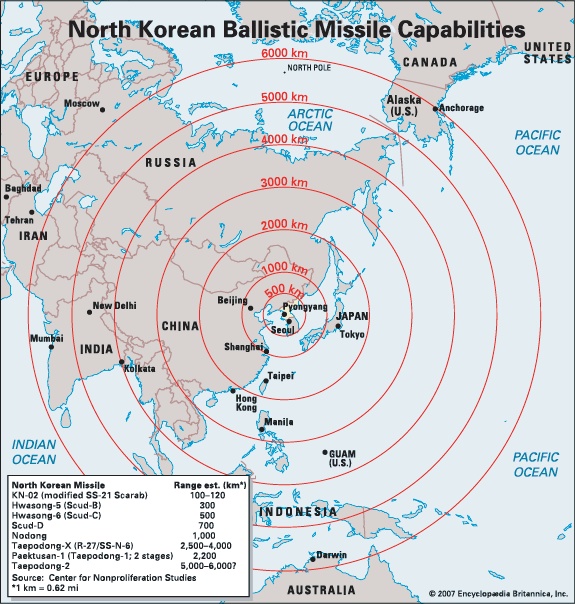 Initially, nuclear strategy concerned only a handful of states: the United States, the Soviet Union, China, the United Kingdom, and France. These were countries embedded, initially at least, in Cold War alliances. In 1974 India tested a nuclear device; this was followed by competitive testing of weapons with Pakistan in 1998. Israel was understood to have acquired nuclear weapons during the 1970s if not earlier, and North Korea avowed its acquisition of at least one or two weapons in 2002. In 1991 it became apparent that Iraq had a vigorous and potentially successful nuclear program, and a similar Iranian program had been under way. The spread of nuclear weapons amounted effectively to a second nuclear revolution, which may have operated by a different logic than the first. The stylized (though nonetheless frightening) standoff of the Cold War was replaced by a world in which many of the same elaborate safeguards might no longer exist, by nuclear possession on the part of countries that routinely fought one another (particularly in the Asian subcontinent), and by the development of weapons small enough to be smuggled into a country in a variety of ways. By the beginning of the 21st century then, nuclear issues had revived as a subject of strategic concern, if not serious strategic thought. The proliferation of nuclear technology by a Pakistani scientist, Abdul Qadeer Khan, and the development of nuclear weapons by Kim Jong Il's North Korea shook optimistic assumptions about the ability of the interstate system to stop marginal actors from acquiring and spreading the wherewithal to make nuclear weapons—including the possibility of terrorist groups acquiring such weapons. The overt entry of India and Pakistan into the nuclear club, the generally acknowledged Israeli nuclear arsenal, and the looming Iranian nuclear threat were no less unsettling.
Initially, nuclear strategy concerned only a handful of states: the United States, the Soviet Union, China, the United Kingdom, and France. These were countries embedded, initially at least, in Cold War alliances. In 1974 India tested a nuclear device; this was followed by competitive testing of weapons with Pakistan in 1998. Israel was understood to have acquired nuclear weapons during the 1970s if not earlier, and North Korea avowed its acquisition of at least one or two weapons in 2002. In 1991 it became apparent that Iraq had a vigorous and potentially successful nuclear program, and a similar Iranian program had been under way. The spread of nuclear weapons amounted effectively to a second nuclear revolution, which may have operated by a different logic than the first. The stylized (though nonetheless frightening) standoff of the Cold War was replaced by a world in which many of the same elaborate safeguards might no longer exist, by nuclear possession on the part of countries that routinely fought one another (particularly in the Asian subcontinent), and by the development of weapons small enough to be smuggled into a country in a variety of ways. By the beginning of the 21st century then, nuclear issues had revived as a subject of strategic concern, if not serious strategic thought. The proliferation of nuclear technology by a Pakistani scientist, Abdul Qadeer Khan, and the development of nuclear weapons by Kim Jong Il's North Korea shook optimistic assumptions about the ability of the interstate system to stop marginal actors from acquiring and spreading the wherewithal to make nuclear weapons—including the possibility of terrorist groups acquiring such weapons. The overt entry of India and Pakistan into the nuclear club, the generally acknowledged Israeli nuclear arsenal, and the looming Iranian nuclear threat were no less unsettling. arms control
Not surprisingly, in view of the threat of nuclear devastation, the second challenge to the traditional paradigm of strategy came from the effort to control nuclear weapons (nuclear weapon). arms control has had a long history, perhaps as old as organized warfare itself, but it became a major feature of international politics in the interval between the two World Wars and even more so during the Cold War. A variety of agreements—from the Washington Naval Conference (Washington Conference) (1921–22) to the Anti-Ballistic Missile Treaty (1972)—constrained military hardware and forces in a variety of ways.
The theory of arms control, articulated primarily by academics, repudiated much of the logic of strategy. Traditionally, arms control has had three purposes: reducing the risks of war, preparing for the burdens of war, and controlling damages should it break out. Underlying arms control, however, lay a deeper belief that weapons in and of themselves increase the probability of armed conflict. Where Clausewitz had believed that the logic of war lay outside the realm of the forces used to wage it, arms control rests implicitly on the idea that weapons and the organizations built around them can themselves lead to conflict. Instead of war having its origins chiefly in the political intercourse of states, arms control advocates believe that war has an autonomous logic, though one that can be broken or interrupted by international agreements.
The first nuclear era, from the late 1940s through the 1990s, which was dominated by the nuclear standoff between the Soviet Union and the United States, seemed propitious for this view of the world. This was particularly true in the last quarter of the 20th century, when arms control agreements became the dominant feature of U.S.-Soviet relations and a general measure, in many parts of the world, of the prospects for peace.
The end of the Cold War meant the weakening or irrelevance of some arms control agreements, such as those that limited the distribution of conventional forces in Europe. Others were abrogated or ignored by their signatories—most notably, when the United States invoked a clause in the Anti-Ballistic Missile Treaty on Dec. 13, 2001, to withdraw from the agreement. Other conventions remained intact, though, and seemed in some cases to assume added urgency. In particular, efforts to ban chemical (chemical weapon) and biological weapons (biological weapon) assumed new vigour, although it was not clear whether advances in science at the beginning of the 21st century would make it impossible to restrict the development of lethal toxins or artificial plagues.
The 1968 Treaty on the Non-proliferation of Nuclear Weapons (Non-proliferation of Nuclear Weapons, Treaty on the) (NPT) had a mixed record in blocking states from acquiring atomic or thermonuclear weapons. The NPT, coupled with energetic diplomacy by the United States and other great powers, prompted a wide range of governments, including Argentina, Australia, Sweden, and Taiwan, to terminate or put into dormancy nuclear programs. On the other hand, at least one NPT signatory, Iraq, blatantly violated the treaty with an extremely active nuclear weapons program, which was thwarted in 1981 by an Israeli preemptive attack on the nuclear reactor under construction at Osirak and thwarted again, at least for a time, by an intrusive system of United Nations inspections following the Persian Gulf War (1991).
Still, other countries have joined the nuclear club. The open acquisition of nuclear weapons by India and Pakistan (neither of which had ratified the treaty) did not diminish the prestige or importance of those countries—quite the reverse in some ways. A determined effort by North Korea to acquire nuclear weapons, even at the expense of its previous agreements with other powers, suggested that the notion of preventing proliferation by treaty or international consensus had weakened. When, in 2002, the United States formally announced a willingness to employ force preemptively against threats to its national security, more than one observer supposed this had something to do with nuclear proliferation.
The arms control critique of strategy has its greatest force in the nuclear realm because nuclear weapons are different. Even so, the logic of Clausewitzian strategy survives. Offense exists, of course, but so too does defense, in the form of antiballistic missiles, preemptive attack, and various forms of civil defense. States acquire weapons of mass destruction (weapon of mass destruction) for reasons that are largely political in nature. Furthermore, international agreements remain at the mercy of states' willingness to subject themselves to them. Below a certain threshold of violence, moreover, traditional strategy still operates, as in the sparring between India and Pakistan over Kashmir. India and Pakistan, however, are states with well-developed institutions and without the urge to annihilate one another. Whether a nonstate actor, such as Hezbollah (a militia and political party in Lebanon) or al-Qaeda (Qaeda, al-), would be subject to the same restraint is more questionable.
Strategy and wars of national liberation
In the years following World War II, scores of new states arose, many of them following protracted struggles of national liberation from European powers attempting to maintain their colonial positions. In so doing, a variety of movements and countries waged war against the technologically superior armed forces of the West. These new countries won their independence not by the force-on-force clash of conventional armies and advanced weaponry but through more subtle techniques of subversion, hit-and-run, and, often, use of terrorism.
 To be sure, the European powers had faced able opponents in the past, from the indigenous Native Americans (Native American) to the Marathas (see Maratha Wars (Marāṭhā Wars)) in India during the late 18th and early 19th centuries and Abdelkader in Algeria in the 1830s and to the Boer farmers (see South African War) at the turn of the 20th century. And in many ways the pattern for a successful anti-imperial force appeared shortly after the end of World War I in the form of the Irish Republican Army, which had an important role in convincing the British to end its rule in most of that island. By and large, though, the story of imperial warfare in the period before World War II was of protracted struggle leading to pacification and quiescence. Emilio Aguinaldo (Aguinaldo, Emilio) succumbed to the American forces in the Philippines in 1901 following a two-year rebellion; the caliph ʿAbd Allāh (successor to al-Mahdī (Mahdī, al-)) was swept away by British rifles and machine guns in the Sudan in 1898.
To be sure, the European powers had faced able opponents in the past, from the indigenous Native Americans (Native American) to the Marathas (see Maratha Wars (Marāṭhā Wars)) in India during the late 18th and early 19th centuries and Abdelkader in Algeria in the 1830s and to the Boer farmers (see South African War) at the turn of the 20th century. And in many ways the pattern for a successful anti-imperial force appeared shortly after the end of World War I in the form of the Irish Republican Army, which had an important role in convincing the British to end its rule in most of that island. By and large, though, the story of imperial warfare in the period before World War II was of protracted struggle leading to pacification and quiescence. Emilio Aguinaldo (Aguinaldo, Emilio) succumbed to the American forces in the Philippines in 1901 following a two-year rebellion; the caliph ʿAbd Allāh (successor to al-Mahdī (Mahdī, al-)) was swept away by British rifles and machine guns in the Sudan in 1898.Things changed dramatically after World War II. Zionist rebels made Palestine too much of a burden for British forces there. France yielded Vietnam to Ho Chi Minh's communists and, even more painfully, Algeria to the National Liberation Front. The Dutch gave up the Netherlands East Indies to a Javanese-led anticolonial movement. Portugal eventually withdrew from the mineral-rich provinces of Angola and Mozambique. Even the United States was stymied by poorly equipped communist forces in Vietnam.
What changed after World War II? In some measure the transformation had occurred in the mind before being felt on the battlefield. The great powers had suffered catastrophic humiliations in Europe and, more important, in Asia during the war; they had lost self-confidence, and their colonial subjects had lost their sense of awe and resignation. In Europe and the United States the legitimacy of overseas rule had suffered a blow from which it could not recover: empire was no longer part of the natural order of things. At the same time, the antiliberal ideologies of Marxism-Leninism (Marxism) and, to a lesser extent, fascism (which lived in odd corners of the postcolonial world) conveyed a long-term optimism about the direction history would take. There was no uniform ideology of national liberation, although politicians might claim one existed. There was, however, a climate of opinion that pointed in the direction of new states emerging from the wreckage of the European empires, clinging with fierce pride to the emblems of independence, from airlines to general staffs, and determined to create strong centralized states that could mobilize hitherto politically inert peoples.
There was also the matter of technique and sponsorship. The greatest exponent of the new form of guerrilla warfare was the Chinese political leader and strategist Mao Zedong, who drew on ancient Chinese practice as well as his own modified form of Marxism-Leninism to articulate a new strategy of revolutionary warfare. This congeries of ideas included careful grassroots political work, patience, guerrilla techniques gradually leading to conventional operations as the opposition weakened, and the selective use of terror. Others would supplement or modify Mao's thinking, but the basic concepts were given their due by Western military theoreticians, such as Roger Trinquier and Jules Roy of France, who studied revolutionary war from the other side in the 1950s.
Behind the march of revolutionary warriors, however, lay more traditional forms of military power. The Algerian insurgents had the support of Egypt and other Arab states; the Vietnamese turned to the Chinese and Soviets for support; and the anticommunist Muslim guerrillas in the Afghan War gladly took aid from the United States. State sponsorship of such movements, relatively rare in the 19th and early 20th centuries, became far more common, although impressive results (in particular the Indonesian struggle with the Dutch) also came in cases ignored by the great powers.
By the end of the 20th century, though, the post-World War II revolutionary techniques no longer appeared quite as effective as they once had. Communism had collapsed; the dogmas of Marxism-Leninism proved economically impractical, though they had at least promised ultimate victory, and confidence is a precious commodity in a revolutionary struggle. The Kurdish conflicts with Turkey and Iran yielded nothing but misery for the populations of that part of the world; only after the military power of Iraq had been shattered in 1991 was anything remotely resembling autonomy achieved for Kurds (Kurd) in a corner of Iraq. Palestinian guerrillas attacked Israel with increasing ferocity for decades, and again, although they inflicted suffering, it is hard to see that they achieved much that longer-term forces—demographic growth and the Israeli desire for normal state relations with its neighbours—did not. Despite tremendous efforts on both sides, vicious insurgent wars in Central America failed to overthrow a leftist regime in Nicaragua or rightist regimes in El Salvador and Guatemala. Many of the supposed advantages of the guerrilla were neutralized by skilled and even brutal opposition, external support, and above all the tenacity of classes, governments, and peoples that had no place to go.
 Revolutionary war started as a rural phenomenon, although, as in Algiers in 1957, it sometimes included particularly vicious bouts of armed struggle in cities. At the end of the 20th century it became more of an urban phenomenon. In countries as different as Uruguay, Algeria, Peru, and Israel, guerrilla war shifted (in many cases, it had not far to go) into pure terror directed against civilian populations. Yet here too the results often disappointed those hoping to overthrow a government or displace a population. Hiding in an apartment block differs greatly from hiding in a jungle or a wooded mountain: nature's creatures do not spy for, collaborate with, or confess to the forces of order, but human beings do.
Revolutionary war started as a rural phenomenon, although, as in Algiers in 1957, it sometimes included particularly vicious bouts of armed struggle in cities. At the end of the 20th century it became more of an urban phenomenon. In countries as different as Uruguay, Algeria, Peru, and Israel, guerrilla war shifted (in many cases, it had not far to go) into pure terror directed against civilian populations. Yet here too the results often disappointed those hoping to overthrow a government or displace a population. Hiding in an apartment block differs greatly from hiding in a jungle or a wooded mountain: nature's creatures do not spy for, collaborate with, or confess to the forces of order, but human beings do.Thus, revolutionary war proved an exceedingly powerful—and yet limited—tool. It left, however, a legacy not only in terms of geopolitics—a multiplicity of new states—but also of aesthetics and morality. The guerrilla fighter—clutching a Soviet-designed AK-47 assault rifle—was a stock figure of leftist politics in the second half of the 20th century. The legacy of terror and brutality, of violence directed against civilians as much as and often a great deal more than at soldiers, had the effect of undermining the rules by which the old strategic game had been played. Classical strategy resembled a game of chess in this respect: the pieces might have different weights and potential, but there were rules, breached occasionally but still observed, if only for the sake of convenience . As with the advent of nuclear weapons (nuclear weapon), the appearance of revolutionary war did not displace old-style militaries—countries, particularly the superpowers, still had vast arrays of tanks, submarines, jet fighters, and rocket launchers—but it raised large questions about their relevance.
Strategy and terrorism
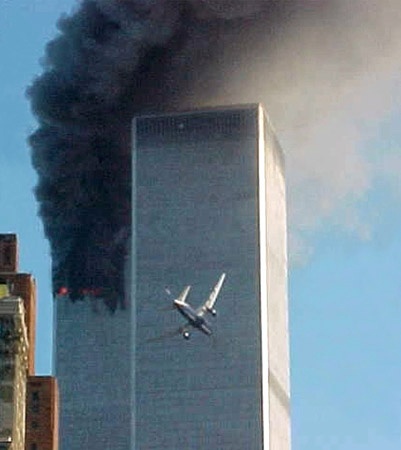 Revolutionary warfare often uses terror for its purposes, but terrorism has its own logic, often quite different from that of national or political groups seeking to control a state. Politically motivated terrorism, defined as the use of violence against noncombatants for the purpose of demoralization and intimidation, is an extremely old phenomenon. However, the September 11 attacks on the United States in 2001 took terrorism to a new level and opened up the possibility of a different form of warfare than any known thus far. The al-Qaeda (Qaeda, al-) organization that launched the simultaneous attacks on New York City and Washington, D.C., which cost some 3,000 lives and inflicted tens of billions of dollars of damage to buildings and a larger economy (particular aviation), was no traditional terrorist organization. It had its home in many countries, particularly Taliban-run Afghanistan, but it was a nonstate organization. It had its senior echelon of leaders, but these could be replaced, and it operated chiefly through terror cells proliferated around the world that could reconstitute and reshape themselves. Its aspirations, as portrayed in Osama bin Laden (bin Laden, Osama)'s declaration in February 1998 of “jihad against Jews and Crusaders,” were vast and religiopolitical in nature. Al-Qaeda was, moreover, a truly global organization whose members traveled easily in a cosmopolitan world in which no place on the planet was much more than 36 or 48 hours traveling time from any other. They communicated with one another using the Internet and cellular telephones, and they reacted to international developments as portrayed on the mushrooming 24-hour-a-day, seven-day-a-week television and other news media of the new century.
Revolutionary warfare often uses terror for its purposes, but terrorism has its own logic, often quite different from that of national or political groups seeking to control a state. Politically motivated terrorism, defined as the use of violence against noncombatants for the purpose of demoralization and intimidation, is an extremely old phenomenon. However, the September 11 attacks on the United States in 2001 took terrorism to a new level and opened up the possibility of a different form of warfare than any known thus far. The al-Qaeda (Qaeda, al-) organization that launched the simultaneous attacks on New York City and Washington, D.C., which cost some 3,000 lives and inflicted tens of billions of dollars of damage to buildings and a larger economy (particular aviation), was no traditional terrorist organization. It had its home in many countries, particularly Taliban-run Afghanistan, but it was a nonstate organization. It had its senior echelon of leaders, but these could be replaced, and it operated chiefly through terror cells proliferated around the world that could reconstitute and reshape themselves. Its aspirations, as portrayed in Osama bin Laden (bin Laden, Osama)'s declaration in February 1998 of “jihad against Jews and Crusaders,” were vast and religiopolitical in nature. Al-Qaeda was, moreover, a truly global organization whose members traveled easily in a cosmopolitan world in which no place on the planet was much more than 36 or 48 hours traveling time from any other. They communicated with one another using the Internet and cellular telephones, and they reacted to international developments as portrayed on the mushrooming 24-hour-a-day, seven-day-a-week television and other news media of the new century.Here was a final challenge to strategy as traditionally understood. The actors were no longer states but a religious movement—drawing, to be sure, not on the mainstream of Islam (Islām) but a variant of it. Their final objectives (the expulsion of the United States from the Middle East and Persian Gulf and mass conversion to Islam) were on a scale well beyond any seen since World War II. And, most important, they had apparently discovered a way of bypassing the military forces of the greatest power on Earth in order to strike a more devastating blow at the American homeland than any suffered since the American Civil War of the 19th century. Furthermore, al-Qaeda had its roots in the troubles of a broader Arab, and to some extent Muslim, world that was at odds with a Western (and above all American-dominated) global socioeconomic order. Here was not a conflict among states but the spectre, if not the reality, of what American political scientist Samuel P. Huntington (Huntington, Samuel P.) had called “a clash of civilizations.”
For such a war, the traditional language and tools of strategy seemed radically unsuited. Indeed, the very use of the terminology of crime and punishment—“bringing the perpetrators to justice” was a common phrase—seemed to suggest that this was not war. A serious case could be made that terrorism—whether of the al-Qaeda type or any other variety—should not be regarded as war at all. Proponents of this view noted that terrorists were not organized or identified as soldiers and that they attacked civilian, not military, targets; in the case of al-Qaeda in particular, they did not even represent a state or an aspiring state. On the other hand, those who conceived of these attacks as acts of war, rather than simply as criminal acts, pointed out that they were not used for the purpose of financial gain or pure sadism but rather to achieve recognizable (if extraordinarily ambitious) political goals. The theoretical debate has not been resolved.
As a practical matter, however, the political debate was, at least for a time, resolved in the United States. The American president, George W. Bush (Bush, George W.), declared to a grieving country shortly after the September 11 attacks that the United States was indeed at war. Military power proved relevant when, within three months of the attacks, a combination of American and allied air power, special operations forces, and local allies had swept al-Qaeda's Afghan hosts out of power. In the ensuing months, although the enemy proved elusive (as guerrillas always have), a combination of covert operations, precision weaponry, and massively integrated intelligence activities enabled the United States and its allies to track down and capture or kill many key al-Qaeda operatives. This success presented another set of issues, which again remain unresolved. Should captured terrorists be treated as criminals (with rights to due process) or as prisoners of war (with a different set of rights), or should they be in some separate category? What sort of respect should countries show for one another's sovereignty in pursuing such individuals? Again, none of these problems were new; they would have been familiar, in outline, to French counterintelligence officers during the Algerian war or, earlier, to Austrian officials monitoring national minorities before World War I, but they became particularly acute after 2001.
The problem of al-Qaeda in the early 21st century was different in other ways. Al-Qaeda was not a national movement (although it tapped ethnic and nationalist sentiments in places as different as Chechnya and Bosnia); nor was it nearly so centralized and organized as the Comintern (International, Third) in the early days following the creation of the Soviet Union. More like a franchise, al-Qaeda was sometimes simply a source of inspiration to self-organizing groups of individuals across the globe who were united by some common beliefs and informed about technique and approach through the Internet.
In some ways one can see the rise of al-Qaeda and catastrophic terrorism (though the use of biological, chemical, and radiological weapons of mass destruction had barely begun) as a reaction to a larger development: a massive shift of the global balance of power in favour of the United States. In a series of short, sharp conflicts in the last decade of the 20th century, the United States proved to have developed armed forces in advance of any others on the planet. This reflected many advantages: a huge edge in military expenditure (nearly matching that of the rest of the world combined), the most advanced technology in the world, a quiet revolution in training methods, and behind it all, the largest, most dynamic economy the world had ever known, accounting for somewhere between a quarter and a third of the world's production. Even great powers such as China could only hope to match the United States in a few narrowly defined areas or seek to nullify its advantages by so-called “asymmetric” means (such as guerrilla warfare).
The classical paradigm of strategy rested on a world of homogeneous forces. In Clausewitz's day, one European army looked pretty much like another; the same was true of navies as well. The one might be smaller or less efficient or slightly worse off than the other, but they used the same weapons, fought in the same formations, and thought in the same way. This basic truth held pretty much through World War II and even in large measure through the Cold War. By the 21st century, though, the vastly superior capabilities of the U.S. military had become a matter of quiet anxiety among even the general staffs of its staunchest allies.
As military power evolved through the 20th century, moreover, it became more difficult to assess. No country other than the United States, for example, could build and use a stealth intercontinental bomber. On the other hand, commercial imaging satellites at the end of the 20th century offered most governments, and even private groups, the same kind of fine-grained photographs of surface infrastructures that was once reserved for only a handful of countries. In addition, civilian communications and computing technology took the lead away from the military sector, making it difficult to measure the extent to which any country could exploit those technologies by networking computers and sensors for military purposes. Military power had become more opaque, more prone to surprises even on the part of well-credentialed analysts. To use Clausewitzian jargon, the “grammar” of war—the way in which militaries fought, the tools they could use, and the means by which they organized themselves—had changed.
So too had the logic of war. The great ideological struggles of the 20th century had ended: secular belief systems (most notably fascism and communism) had been overwhelmed or come sputtering to irrelevance. Although the idea of using military power to grab desirable pieces of territory or national resources had not ended—how else to explain Ṣaddām Ḥussein's invasion of oil-rich Kuwait in 1990?—war did not seem a particularly attractive economic proposition. National prestige and honour still provided a motive for war (one thinks of Argentina's seizure of the Falkland Islands in 1981), but these were isolated cases. Ethnic or religious hatred, however, persisted, as did the chaos attendant upon the collapse of states that proved incapable of maintaining themselves in the face of fissiparous pressures from below and corruption or gross incompetence from above.
After a brief but sincere burst of optimism following the end of the Cold War in the 1990s, subsequent experience seemed to indicate that war had changed but not vanished. Conflicts now seemed likely to take place between very different kinds of actors, and even when states confronted one another, they would use weapons unheard of in the classical period of strategy. The goals too would vary greatly, from the mundanely acquisitive to the eschatological and ultimate. Distinctions between combatant and noncombatant blurred, and even local contests would now take place before a global audience. It was all very different from anything Clausewitz had imagined.
The transformation of strategy in the 21st century
Part of the perplexity of strategic thought in the early 21st century stemmed from a restricted historical imagination. For most politicians and generals in the 19th and 20th centuries, war meant the kind of conflict characteristic of European contests from the middle of the 17th century to their own time: state-centred, conducted by increasingly professional armed forces, nominally excluding civilians, and involving well-defined instruments commonly available in developed states. These were wars that began with declarations and ended with armistices or treaties; they might last weeks, months, or even years, but they had definite beginnings and endings.
In the emerging world of the 21st century, it seemed reasonable to reach further back in time. Medieval warfare, after all, could last decades, even centuries. It involved states and trans- or substate organizations—even philanthropic organizations. Religion provided powerful motivation, but so too did state and even personal interest. High politics mixed with banditry, and even the most powerful persons and societies were subject to acts of extraordinary savagery and cruelty. No prudent political leader in the United States could publicly describe that country's war with al-Qaeda as a “crusade,” but a thoughtful military historian would point to the parallels.
In such a world the classical paradigm, however modified, still holds some value. If one understands politics broadly enough—as the way in which human societies rule themselves, define and administer justice, and articulate their visions of what is possible and good—war remains very much about politics. The logic of struggle between interacting entities remains. It accounts for the possibility of surprise that forms so large an element in war. The fact that violence, however used, engages the emotions and thereby influences (and sometimes overwhelms) judgment remains true. The advent of weapons that can obliterate cities, and that may be available to small groups of terrorists and not just states, may make the stakes of strategy higher, but they were enormous in the great World Wars of the 20th century.
Strategy is a discipline of thought as well as a practical art. As strategy has become ever more complex, its dependence on a wide array of allied disciplines has grown. In the modern world the good strategist must understand something about development economics and bioengineering, as well as precision guidance and computer programming. In strategy more than other practical fields, there has long existed a craving for dicta and aphorisms: “the offense needs an advantage of three to one,” for example. Such aphorisms may never have been terribly useful, but in a new and no less dangerous century they are less helpful than ever in steering politician and soldier alike through choices that remain as consequential as they have ever been.
Additional Reading
Edward Mead Earle, Gordon A. Craig, and Felix Gilbert (eds.), Makers of Modern Strategy: Military Thought from Machiavelli to Hitler (1941, reissued 1971), remains a most competent anthology on the development of the military mind and art. Its worthy successor is Peter Paret, Gordon A. Craig, and Felix Gilbert (eds.), Makers of Modern Strategy: From Machiavelli to the Nuclear Age (1986), which repeats three of the essays and provides more than 20 new ones. To both should be added Williamson Murray, MacGregor Knox, and Alvin Bernstein (eds.), The Making of Strategy: Rulers, States, and War (1994), which looks at strategy as a collective rather than an individual function.Among the classic texts of strategic thought, the two most important are Carl von Clausewitz, On War, ed. and trans. by Michael Howard and Peter Paret (1976, reissued 1989); and Sunzi, Sun Tzu: The Art of War: The First English Translation Incorporating the Recently Discovered Yin-ch'üeh-shan Texts, trans. by Roger T. Ames (1993). Geoffrey Blainey, The Causes of War, 3rd ed. (1988), is the best short modern introduction to the origins of wars. To these one should add the masterly collection of essays by Michael Howard, The Causes of War (1984); and, for a study on the relationship between politicians and generals in modern war, Eliot A. Cohen, Supreme Command: Soldiers, Statesmen, and Leadership in Wartime (2002).Thucydides, The Landmark Thucydides: A Comprehensive Guide to the Peloponnesian War (1996), is an excellent starting point for exploring the history of military strategy. Hew Strachan, The First World War, vol. 1, To Arms (2001), begins the monumental three-volume history covering strategy in World War I. For works that explore the full complexity of high command at the top, the reader should turn to broad military histories, such as the extraordinary British official history of strategy during World War II, Grand Strategy, 6 vol. in 7 (1956–76), a Her Majesty's Stationery Office publication; or the more limited Maurice Matloff and Edwin M. Snell, Strategic Planning for Coalition Warfare, 2 vol. (1953–59, reprinted 1968; vol. 1 also reissued separately, 1999), covering the years 1941–44. There are good accounts of strategic decision making in more recent conflicts in Michael B. Oren, Six Days of War: June 1967 and the Making of the Modern Middle East (2002); and Michael R. Gordon and Bernard E. Trainor, The Generals' War: The Inside Story of the Conflict in the Gulf (1995).Finally, the reader should not disregard the works about and by the makers of strategy themselves. In particular, Winston S. Churchill, Marlborough: His Life and Times, 6 vol. (1933–38, reissued 2002), is a strategical treatise masquerading as biography. Alan Brooke, Viscount Alanbrooke, War Diaries 1939–1945, ed. by Alex Danchev and Daniel Todman (2001), the dyspeptic memoirs of the head of the British Army during World War II, gives a useful window into the stresses of war at the top and an unwitting revelation of the difficulty of judging aright in the midst of war. Geoffrey Parker, The Grand Strategy of Philip II (1998), demonstrates that biographies from the early modern period and even before also can be studied with profit.
- Nkole
- Nkomo, Joshua
- Nkongsamba
- Nkosi, Lewis
- Nkrumah, Kwame
- NKVD
- Nmai Hka
- Nnamdi Azikiwe
- Noah
- Noah H. Swayne
- Noahide Laws
- Noah Webster
- Noailles, Adrien-Maurice, 3e duc de
- Noailles, Anna de
- Noailles, Anne, 1er duc de
- Noailles, Anne-Jules, 2e duc de
- Noailles, Jean-Paul-François, 5e duc de
- Noailles, Louis, 4e duc de
- Noailles, Louis-Antoine de
- Noailles, Louis-Marie, vicomte de
- Noakhali
- Noam Chomsky
- Noatak National Preserve
- Nobel, Alfred Bernhard
- Nobel Foundation